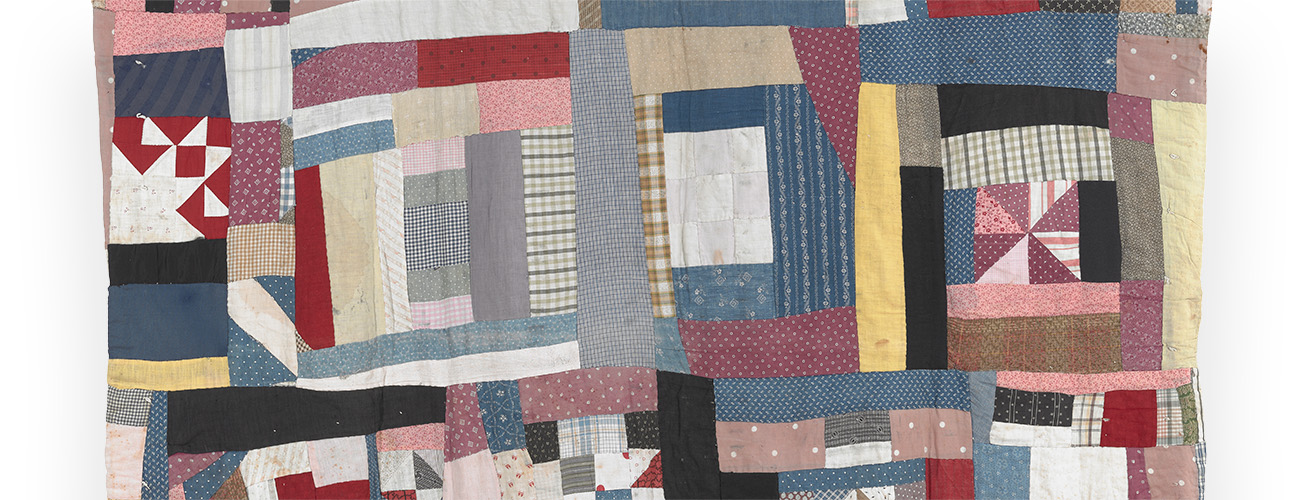Bridget R. Cooks
How can quilts made by Black women change the way we tell the history of abstract art?
Maker once known, Housetop Sampler (detail), 1910s–1920s, cotton, 68 × 62 inches, High Museum of Art, Atlanta, gift of Corrine Riley on the occasion of Collectors Evening 2017, 2017.182.
When New York became the center of the art world after World War II, it did so through the bold language of Abstract Expressionism. In this moment, abstraction was a visual and stylistic symbol for American innovation, nationalism, power, and masculinity. It signified a shift in visuality, the interpretation of materials, the confident movement of the white American male body, and the independent vision and voice of the American artist. The answers to why abstract art by Black women has been ignored lies within questions of nationalism and citizenship that our nation is still grappling with: Who has the right to freedom and equality in America? Who belongs in America and can speak for the nation? Who has the right to see and express what is seen? We may have two sets of answers to these questions: one that professes our national ideals, and the other that testifies to our national reality. Recognizing the duplicity in these answers can inform our understanding of how Black women’s quilts change the ways we tell the history of abstract art.
As art historian Ann Gibson tells us in Abstract Expressionism: Other Politics, “the heroism of the most vaunted abstract art was equated with the identity of its maker. In a society in which African Americans were discounted socially and intellectually, individual black artists were by definition precluded from being celebrated, let alone regarded as ‘heroic.’”1 And so, I ask: If Black women are not perceived as valuable outside of the art world, how can we have value inside of the art world?
Including Black quilters in the narrative of abstraction shifts the focus from a privileged few academically trained white male artists to a group who did not share those privileges. It means that in contrast to the prevalent art historical belief, nonrepresentational creativity cannot be exclusively maintained within racial and gendered lines. If we accept Arthur Jafa’s argument that “our notion of the ‘abstract’ arises from the simple refusal of, or resistance to, the ontological fact of black being” and that “representations of the black body, as rendered by traditional African artifacts, were rejected (by whites) as instances of verisimilitude and instead received as ‘highly stylized’ or ‘abstract,’” then we must understand Blackness as central to the conception of abstraction.2 Further, if we understand that abstract painters such as Jackson Pollock were highly influenced by jazz and its foundation of improvisational structure, then we can see that art history’s positioning of abstraction as alienated from Blackness has always been astray. Discussing Black women’s quilts as abstraction not only changes the narrative of American abstraction—it demands a rethinking of its premise as anything but Black.
